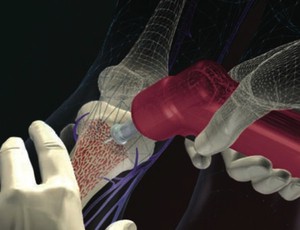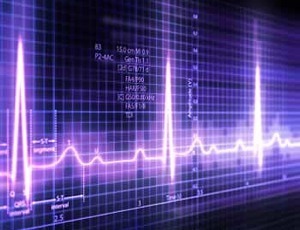Analysis of the intraosseous needle insertion practice improvement registry

Few practice improvement registries exist that describe opportunities to improve intraosseous (IO) use. The goal of this project was to assess the success rate of the procedure by emergency nurses and identify opportunities to improvement” Dymond et al (2018). Abstract: INTRODUCTION: Few practice improvement registries exist that describe opportunities to improve intraosseous (IO) use. The […]
CLABSI reduction with Lean methodology and plan-do-study-act (PDSA) cycles

We therefore undertook a multidisciplinary collaborative among clinical epidemiology, nursing, transplant surgery, and critical care to eliminate CLABSI events” Russell et al (2018). Abstract: Background: Increases in liver transplant patient perioperative acuity have resulted in frail immunosuppressed patients at elevated risk for nosocomial infections. Avoiding central line–associated bloodstream infections (CLABSIs) is paramount to facilitate transplantation […]
Molecular analysis of biofilm formation in central venous catheters

The behavior of methicillin-resistant Staphylococcus aureus (MRSA) isolated from central venous catheter-related infection was evaluated to determine its biofilm potential, antimicrobial resistance, and adhesion genes” Sohail and Latif (2018). Abstract: INTRODUCTION: The behavior of methicillin-resistant Staphylococcus aureus (MRSA) isolated from central venous catheter-related infection was evaluated to determine its biofilm potential, antimicrobial resistance, and adhesion […]
Regulatory considerations for central venous catheters for hemodialysis

Central venous catheters remain a vital option for access for patients receiving maintenance hemodialysis. There are many important and evolving clinical and regulatory considerations for all stakeholders for these devices” Silverstein et al (2018). Abstract: Central venous catheters remain a vital option for access for patients receiving maintenance hemodialysis. There are many important and evolving […]
Hypersensitivity and infusion-site adverse events with intravenous fosaprepitant

Fosaprepitant, an intravenous neurokinin-1 receptor antagonist for chemotherapy-induced nausea and vomiting, contains polysorbate 80, which is associated with infusion-site adverse events (ISAEs) and hypersensitivity systemic reactions (HSRs)” Boccia et al (2018). Abstract: AIM: Fosaprepitant, an intravenous neurokinin-1 receptor antagonist for chemotherapy-induced nausea and vomiting, contains polysorbate 80, which is associated with infusion-site adverse events (ISAEs) […]
What are the microbe species responsible for CLABSI after liver resection?

Our goal was to evaluate the microbe species responsible for bacteremia or infections related to central venous catheter (CVC) or fluid collections after liver resection” Kostakis et al (2018). Abstract: BACKGROUND: Our goal was to evaluate the microbe species responsible for bacteremia or infections related to central venous catheter (CVC) or fluid collections after liver […]
Study offers evaluation of residual chlorhexidine gluconate on skin

Skin antisepsis is performed before surgery to minimize the risk of surgical site infections. Chlorhexidine gluconate (CHG) is routinely used in this application, but it may be removed during surgery when prepped areas are exposed to fluid and repeated blotting” Bashir et al (2018). Summary: Background: Skin antisepsis is performed before surgery to minimize the […]
Assessment of adherence behaviors for the self-reporting of occupational exposure to blood

The prevalence of exposure to blood/body fluids among RNs was high, and the underreporting rate was likely substantially underestimated” Yi et al (2018). Abstract: BACKGROUND: In China, register nurses (RNs) have a high risk of occupational exposure to blood/body fluids. The adherence behavior related to self-reporting of occupational exposure needs to be evaluated to protect […]
Dual-Port versus mono-port implantation for intra-arterial chemoinfusion therapy

To compare the feasibility and safety of mono-port catheter system and dual-port catheter system for advanced hepatocellular carcinoma (HCC) in patients with anatomic hepatic artery variation and portal vein tumor thrombosis” Kim et al (2018). Abstract: PURPOSE: To compare the feasibility and safety of mono-port catheter system and dual-port catheter system for advanced hepatocellular carcinoma […]
Study represents largest analysis of ultrasound-guided access for children

This study represents the largest analysis of ultrasound-guided access for children. A complete practice transition to the ultrasound-guided approach was feasible within a two-year period” Criss et al (2018). Abstract: BACKGROUND: Use of ultrasound-guidance for central venous access in adults is the standard of care. There is, however, less clarity in the role of routine […]
Example of total parenteral nutrition ascites secondary to vessel perforation

One of the uncommon complications reported is total parenteral nutrition (TPN) ascites secondary to vessel perforation or hepatic erosion by the tip of the catheter due to malposition of a UVC” Pegu and Murthy (2018). Abstract: The ease of access and advantages of a secure central line makes use of umbilical venous catheter (UVC) and […]
Intracavitary ECG guidance for peripherally inserted central catheter placement

intracavitary electrocardiogram (IC-ECG) guidance has been recently proposed for peripherally inserted central catheter (PICC) placement since it may reduce the time of placement and avoid radiological control” Santacruz et al (2018). Abstract: INTRODUCTION: intracavitary electrocardiogram (IC-ECG) guidance has been recently proposed for peripherally inserted central catheter (PICC) placement since it may reduce the time of […]
Cost attributable to central catheter bloodstream infections

The aim of this study was to assess the cost attributable to CRBSI and its influencing factors” Cai et al (2018). Abstract: BACKGROUND: Central venous catheters (CVC) have been widely used for patients with severe conditions. However, they increase the risk of catheter-related bloodstream infection (CRBSI), which is associated with high economic burden. Until now, […]
Ultrasound guidance during cannulation of arteriovenous fistulas

The purposes of this project were to determine if ultrasound-guided cannulation of AVFs decreased the number of missed cannulations…” Luehr (2018). Abstract: Individuals who require renal replacement therapy overwhelmingly choose outpatient hemodialysis. Appropriate cannulation techniques are an essential element in access preservation and in the prevention of access-related complications. Missed cannulations can result in damage […]
Association of infections with the use of central venous catheters

The goal of this study was to identify the occurrence of secondary infection due to the use of temporary double-lumen catheters for hemodialysis in 96 patients with acute kidney injury or acute chronic kidney disease” Ferreira et al (2018). Abstract: The goal of this study was to identify the occurrence of secondary infection due to […]
Estimation of sodium and chloride storage in critically ill patients

Sodium storage has not been studied in ICU patients, who frequently receive large amounts of sodium chloride-containing fluids” Hessels et al (2018). Reference: Background: Nonosmotic sodium storage has been reported in animals, healthy individuals and patients with hypertension, hyperaldosteronism and end-stage kidney disease. Sodium storage has not been studied in ICU patients, who frequently receive […]
Evaluation of IV particulate matter potentially administered to critically ill patients

The objective of this study was to evaluate the particulate matter potentially administered to critically ill patients” Benlabed et al (2018). Abstract: BACKGROUND: In critically ill patients, drug incompatibilities frequently occur because of the number of drugs to be administered through a limited number of infusion lines. These are among the main causes of particulate […]
Analysis of peripheral central venous access ports at the forearm

The aim of this study was to analyse the characteristics of central venous catheters with brachial-implanted reservoirs and the complications associated with their use over a 4-years period” Alfonso Alvarez-Rodríguez et al (2018). Abstract: The aim of this study was to analyse the characteristics of central venous catheters with brachial-implanted reservoirs and the complications associated […]
Needlestick injuries and other body substance exposures among police officers

We determined the incidence and circumstances of needlestick injuries and other body substance exposures among police officers in a city police department” de Perio et al (2018). Abstract: Background: We determined the incidence and circumstances of needlestick injuries and other body substance exposures among police officers in a city police department. Methods: We analyzed data […]
Treatment of fibrin sheath associated central venous catheter infections

Central venous catheters (CVCs) have become commonplace in modern clinical practice. Despite their myriad of benefits, they are associated with a host of complications, of which thrombosis (2-26%) and infection (5-26%) are the most common” Choi et al (2018). Abstract: Central venous catheters (CVCs) have become commonplace in modern clinical practice. Despite their myriad of […]
Daily chlorhexidine gluconate (CHG) bathing reduces the risk of hospital-acquired infections

Many studies indicate that daily chlorhexidine gluconate (CHG) bathing reduces the risk of hospital-acquired infections” Vanhoozer et al (2018). Abstract: Many studies indicate that daily chlorhexidine gluconate (CHG) bathing reduces the risk of hospital-acquired infections. In this study, we found that patient perceptions can be a barrier to bathing practice, and many independent-care patients do […]
Long-term clinical outcomes of using taurolidine as lock solution

The aim of this study was to evaluate long-term clinical outcomes of our HPN cohort while using taurolidine as lock solution. In addition, we explored risk factors associated with CVAD-related complications” Wouters et al (2018). Abstract: BACKGROUND & AIMS: Central venous access device (CVAD)-related complications, such as central-line associated bloodstream infections (CLABSIs), CVAD-related venous thromboses […]
Intraosseous catheter deformation due to positioning patient for thoracostomy

Following removal the intraosseous catheter was noted to be deformed (Fig. 1). A chest radiograph taken prior to removal showed the correct insertion point in the proximal humerus with no evidence of local bony injury, but with a bend in the catheter located at the insertion site” Reid et al (2018). Extract: The intraosseous catheter […]
Y-site infusion compatibility of drugs administered in intensive care units

This review provides new reliable evidence about the physicochemical stability of drugs commonly used in the critical care setting” Castells Lao et al (2018). Abstract: OBJECTIVES: To gather all published information about the stability of drugs commonly used in Intensive Care Units (ICU); evaluate the methodology of published data; and generate a compatibility table. DESIGN: […]
Example of micafungin administered via an OPAT service

We evaluated the safety and efficacy of micafungin administered via the outpatient parenteral antimicrobial therapy (OPAT) service for the treatment of CPA” Otu et al (2018). Abstract: BACKGROUND: Intravenous micafungin has been reported as a treatment alternative in patients with chronic pulmonary aspergillosis (CPA) where long-term oral triazole therapy is unfeasible. OBJECTIVES: We evaluated the […]
Review of real-time dual-modal vein imaging system

In this paper, we present a vein imaging system to combine reflectance mode visible spectrum images (VIS) with transmission mode near-infrared (NIR) images in real time. Clear vessel localization is achieved in this manner with combined NIR-VIS dual-modal imaging” Mela et al (2018). Abstract: PURPOSE: In this paper, we present a vein imaging system to […]
Extravasation treatment with multiple stab incisions and drainage

We have developed a technique of multiple stab incisions and drainage for the treatment of contrast extravasations” Raveendran et al (2018). Abstract: Extravasation of intravenous contrast agents in the hand and forearm during computed tomography scanning is rising with the use of automated pressure injectors. The main concern in such a situation is progression to […]
Animal model to teach ultrasound-guided central venous catheter insertion

The aims of the study were to examine the utilization of an animal model and compare it with two currently used Blue Phantom central line models to determine whether an animal model provides good or better simulated conditions for the performance of UGCVC insertion” Hauglum et al (2018). Abstract: INTRODUCTION: Ultrasound-guided central venous catheter insertion […]
Upper extremity compartment syndrome following radial artery puncture

Acute compartment syndrome is the physiologic consequence of increasing pressures within an enclosed anatomic space; if left untreated, it can subsequently cause irreversible necrosis, nerve injury, and tissue damage. A number of iatrogenic causes have been reported in the literature; however, to the best of our knowledge, there are no prior reports of upper extremity […]
Blood culture contamination quality improvement project

The standard benchmark for blood culture contamination is 3%. Our aim with the quality improvement project was to reduce the contamination rate at our children’s hospital from a mean of 2.85% to

